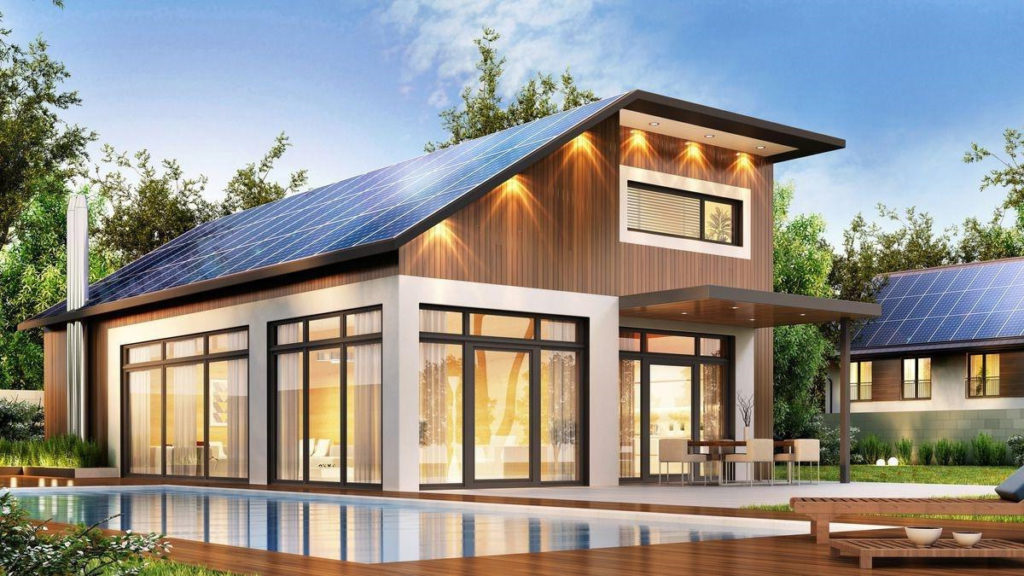Solar panels are useful. You can, for example, take it with you on a fishing trip and charge your phone from it at the first rays of the sun. Or install some solar panels on the roof and forget about the electricity bill.
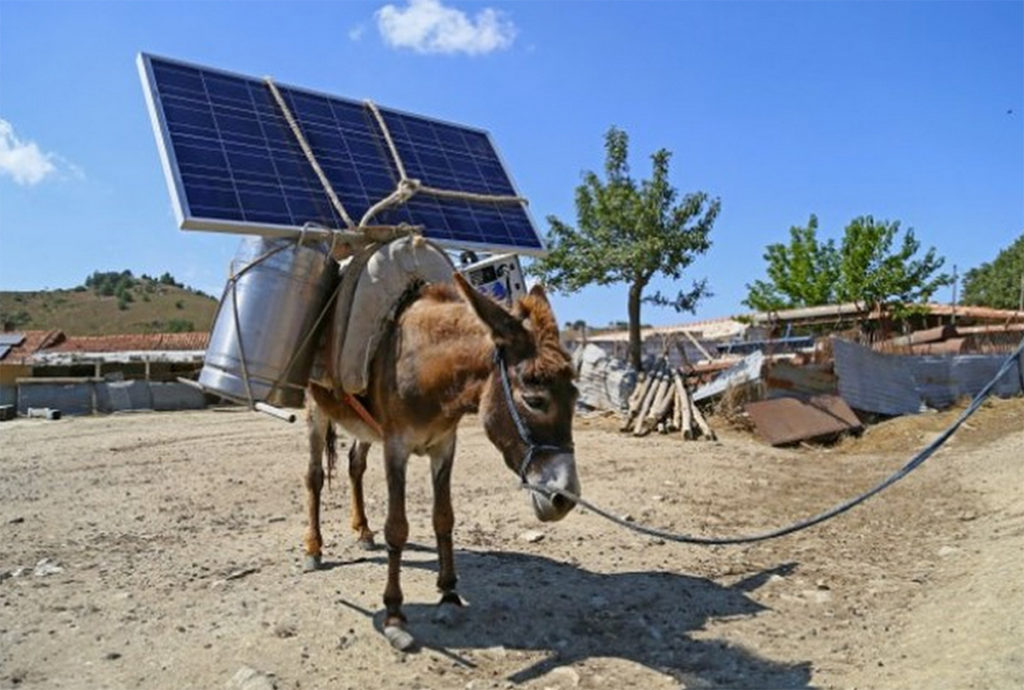
But the solar battery has a significant drawback due to its basic principle of operation – it can only generate electricity in the presence of the sun. At night, unfortunately, she “falls asleep” and leaves your electrical appliances to their fate. How to get out of this situation so that you can enjoy the benefits of technological progress around the clock? Of course, batteries come to the rescue here, which are charged by solar panels during daylight, and after dark they give energy to electrical appliances. However, batteries are a tricky thing. They do not like to charge beyond the passport data, and many of them do not like to be completely discharged. If the charging-discharging modes are violated, they fail ahead of time. In order to remove this problem, they have developed special devices that control the operation of batteries and solar panels. They are called controllers.
As you know, the solar battery generates a constant voltage. The battery also works with constant voltage. But what if you need to connect a TV or refrigerator to electricity? They also work on alternating voltage, and even much larger than that produced by a solar battery. For example, your solar panel and battery are designed to work with 24 volts DC, and you want to turn on a desktop computer that is designed to be connected to normal mains voltage! To get out of this situation, there are voltage converters called inverters. Similar inverters are used in cars. In cars, they convert 12 volts DC to 220 volts AC.
Thus, for the full functioning of your solar power plant, you need to have four components – solar panels, batteries, a controller and an inverter. Well, communication cables that will connect it all together.
- Basics
- Connection options
- Controller selection
- Battery selection
- Cable selection and connection
- Fuse selection
Basics
Solar panels should be installed in such a way as to take as much light from the moving sun as possible. It should be noted that in winter the sun passes almost above the horizon, and in summer it rises almost to the zenith. For example, if you mount solar panels on a chalet-type sloping roof, common in Scandinavia, then in winter they will simply be covered with snow, and if not, then the sun’s rays will pass tangentially and the battery will develop little power. If you place them on a steep roof, then the panel will be ineffective at noon. From which it follows that if the solar panels are directed to the south and tilted at an angle of 45 degrees, then during the year it will absorb the largest amount of light in total, since they will capture both horizontal rays at sunrise and sunset and daytime vertical ones. From these considerations, we can conclude that during the year and day, the sun is located at the zenith much less often than above the horizon, which means that solar panels are optimally placed at an angle of 45-60 degrees to the earth’s surface. Then they will capture the light from both the low winter sun and the rising-setting summer sun. Only the rays of the summer midday sun will pass tangentially, but this is precisely the hot and bright time, the time when the need for energy is minimal. These conclusions apply to middle latitudes, because if you live at the equator, then there are no seasonal changes in the position of the sun, at the equator they pass along the zenith, strictly along the north-south line, and there are completely different orientations.
If solar panels are not installed on the roof, but in places with easy access, for example, on a site near the house , then they can be mounted in such a way as to be able to change the angle of inclination from winter to summer mode. Care should be taken to ensure the reliability of fasteners, since solar panels have a high windage and can be damaged by strong winds. In addition, it must be possible to clean the panels from dust, as dust drastically reduces the performance of the system.
To install solar panels on flat roofs , mounting systems called ballast systems are used. They allow you to set the desired angle of inclination and are made of a special stainless steel profile.

If it is possible to use a sufficiently large number of solar panels, they are installed with different orientations to the cardinal points and inclination angle – some of them should be directed to the east and west, close to the vertical position, and some of them to the south, but more gently. Then, in the first third of the daylight hours, the panels oriented to the southeast and with an inclination of 45 degrees bear the maximum load, in the second third, the panels directed to the south and looking almost at the zenith work, and the rest of the day is finalized by the panels directed to the setting sun.
Connection options
If several solar panels are used, then they must be connected to a common battery. Solar panels can be connected in different ways, depending on what output voltage and power you need.
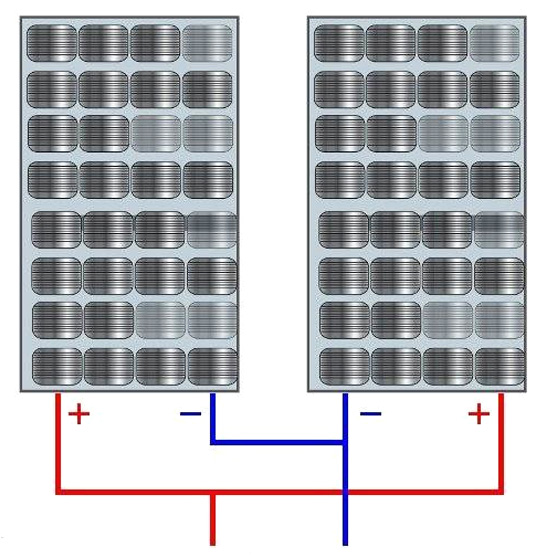
If you connect them in parallel , that is, connect all the minuses to one point, and all the pluses to another, then the voltage at the terminals will remain the same as that of one solar battery, but the current will increase exactly as many times as you connected the panels. Accordingly, the power of the system will increase by the same amount, since the power is calculated by the formula P \u003d U ⋅ I, where P is the power in Watts, U is the voltage in Volts, and I is the current in Amperes.
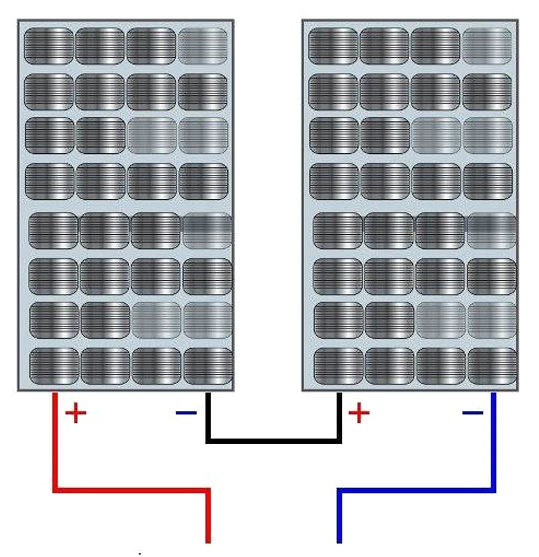
If you connect them in series , that is, plus to minus the next, then the voltage of the system will increase as much as the solar panels in the system. Power will also increase due to an increase in voltage, according to the same formula P \u003d U ⋅ I.
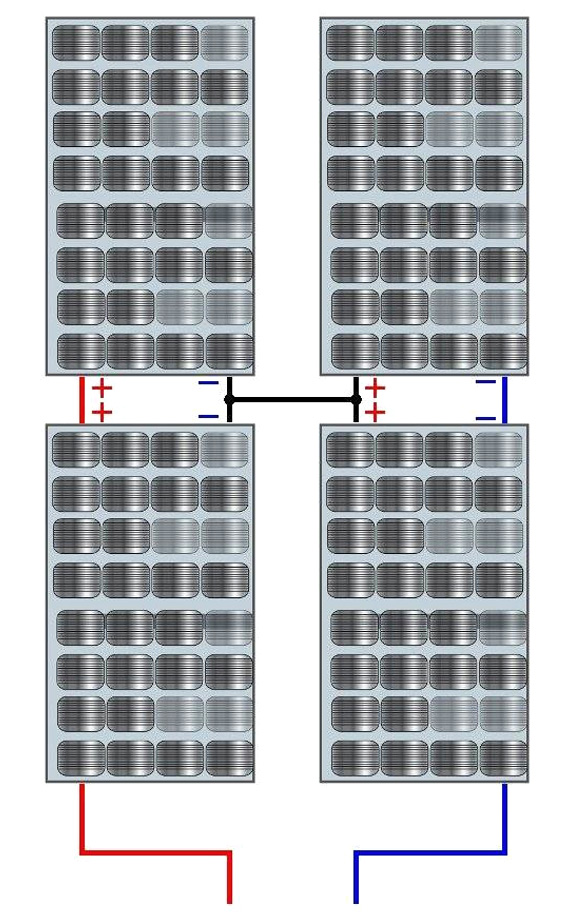
With series-parallel connection , various combinations of voltages and powers also occur. For example, 4 solar panels connected in series-parallel produce 4 times more power than one panel, 2 times more voltage and 2 times more current.
If the system uses 12 volt batteries and 12 volt solar panels, then, of course, they are connected in parallel so that the voltage remains unchanged, namely 12 volts, and the current increases. If the voltage of the solar panels and the battery do not match, then serial, parallel, as well as series-parallel connections of solar panels or batteries can be used. For example, a 48 volt solar panel can be loaded with four 12 volt batteries connected in series.
So, the conclusion is: a parallel connection raises power by increasing the current, a series connection by increasing the voltage, and a series-parallel connection by simultaneously increasing both current and voltage. This is all fair if the solar panels look at one point. If they are oriented in different directions of the world, the voltages and currents on each of them will be different.
Controller selection
When combining solar panels and batteries, you should not forget that their voltages correspond to the voltage of the controller.
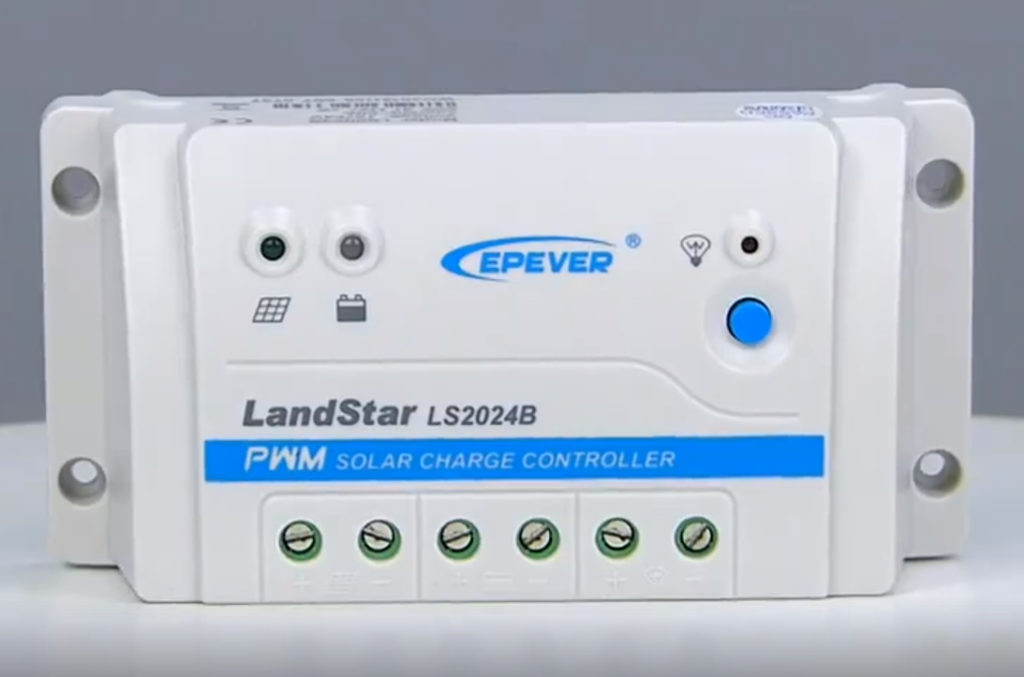
Controllers are constantly being improved, many modern controllers are equipped with a display that makes its work visual, controllers have become so “smart” that they not only monitor charging and discharging, but also optimize the functioning of the “solar battery-accumulator” system so that their interaction occurs with maximum efficiency and in the areas of the most comfortable operating modes of specific equipment.
Despite the fact that many controllers can automatically detect the voltage of the solar battery and turn on in this mode, it should be borne in mind that most controllers work with voltages of 12 and 24 Volts.
The controller monitors several processes at once.
First of all, it determines the level of charge of the batteries. Batteries should not continue to charge at 100% charge. This can disable them. Therefore, the controller opens the circuit between solar panels and batteries as soon as their charge reaches the passport level. In addition, batteries should not be completely discharged. Firstly, it is uncomfortable – the power supply system is left without a reserve of electricity, and secondly, many types of batteries lose their performance faster when fully discharged. In this case, the controller, having determined that the battery is discharged below a critical value, closes the circuit and connects them to the solar panel.
In addition to monitoring the condition of the batteries, the controller blocks the occurrence of reverse current. What is this phenomenon? When the sun shines on the solar panel, current flows from it to the battery. But if there is no solar radiation (at night or in inclement weather), then the voltage on the batteries can exceed the voltage on the solar panels and the current will flow in the opposite direction – from the batteries to the solar panels. In this case, the controller will react and disconnect the batteries from the solar panels.
In addition, the controllers can optimize the operation of the solar system. They create such charging modes in which the batteries will last longer, while accumulating more charge. Since the solar battery is a semiconductor device, it means that it has a current-voltage characteristic (CVC).
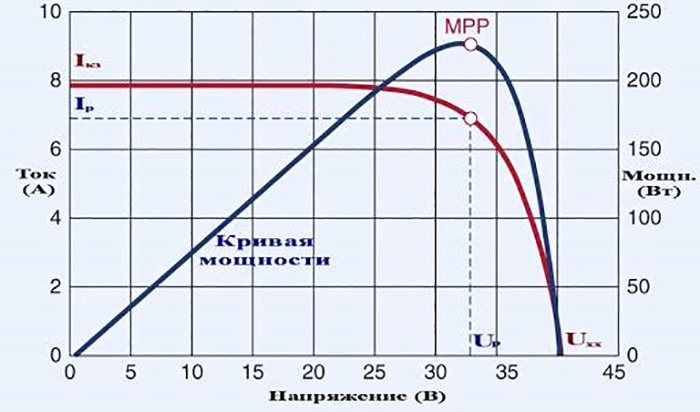
Each solar panel has its own individuality. Batteries also have their own characteristics of work, depending on the design. The controller learns the current-voltage characteristic of a particular solar panel and develops operating modes that are ideal for batteries. Tracking the best energy point, namely the combination of voltage, current and load resistance, allows you to deliver maximum power with minimal system overload.
Controller Models
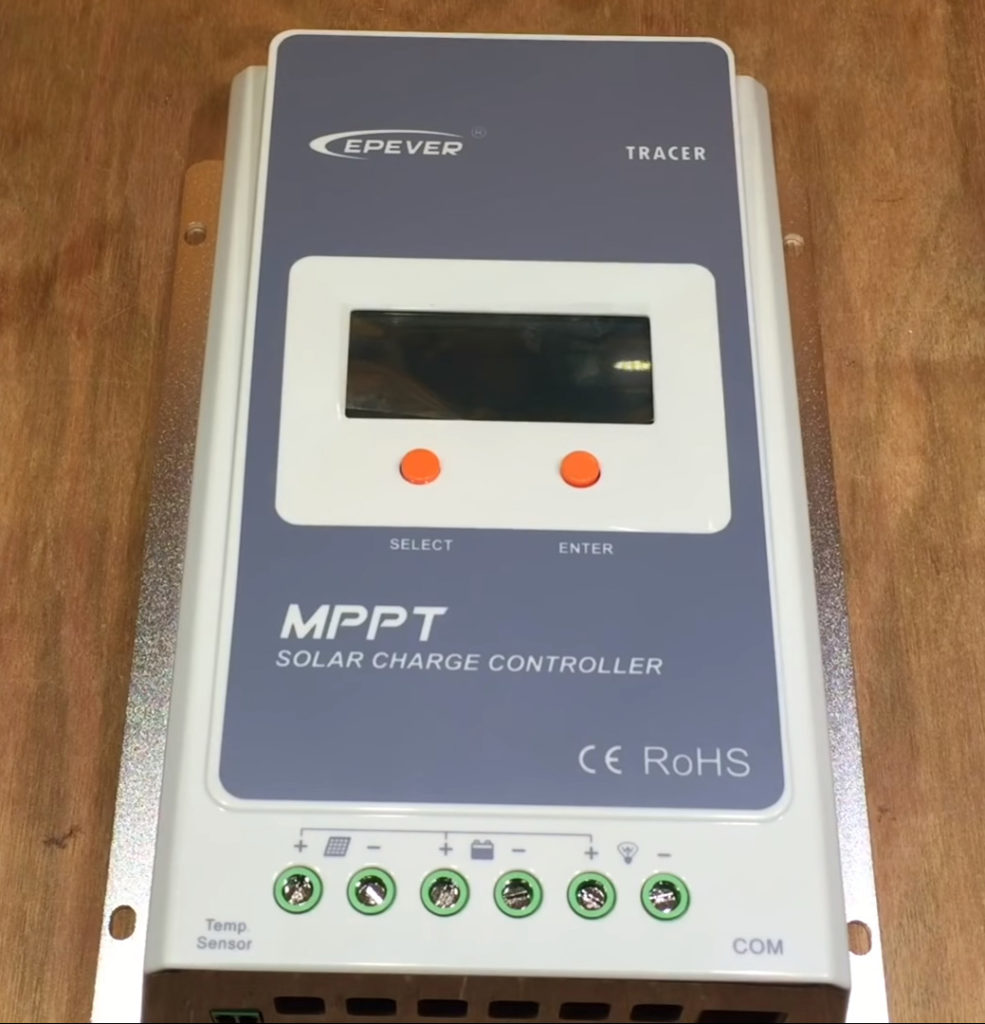
Firms developing controllers are constantly improving their design, and at the moment the most advanced models are of the MPPT type . MPPT is short for Maximum Power Point Tracking, which means tracking the maximum power point of a solar array to improve system efficiency.
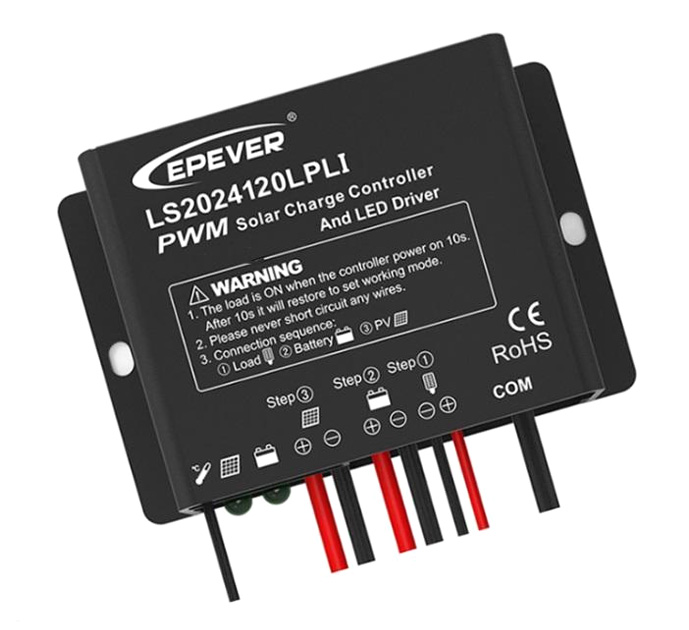
The controllers of the PWM (pulse-width modulation) system are arranged a little simpler – controllers operating on the principle of pulse-width modulation (PWM).
These are well-known devices, they are used in computers, mobile phones, fluorescent lights, chargers, and many other devices. PWM controllers are inferior to MPPT in terms of the thoroughness of optimizing the charging process, but they are significantly cheaper.
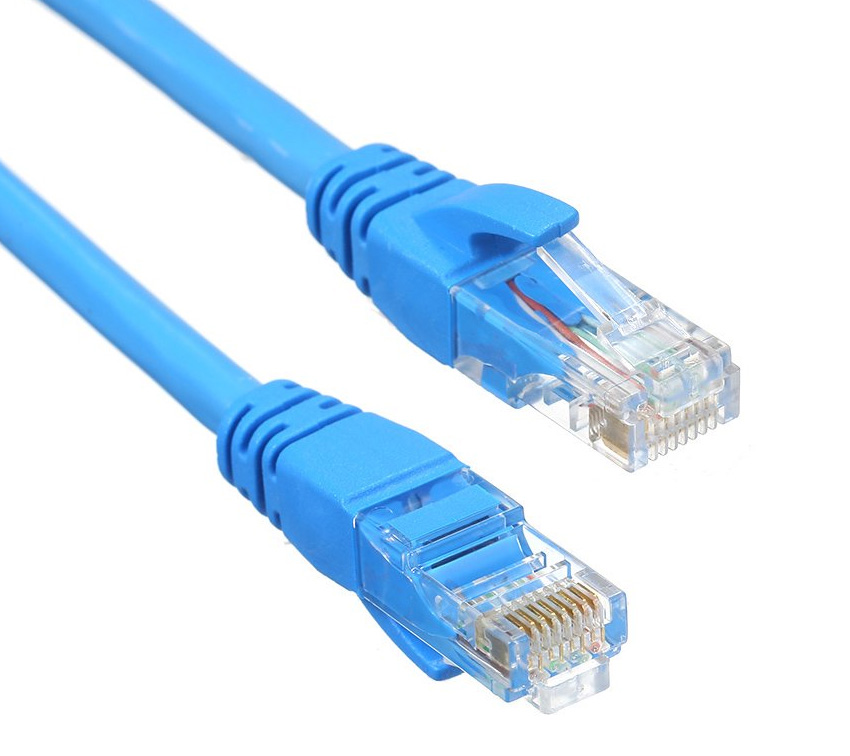
The controllers have an RJ-45 port. You have seen this type of connector in modems and routers.
It is for remote control.
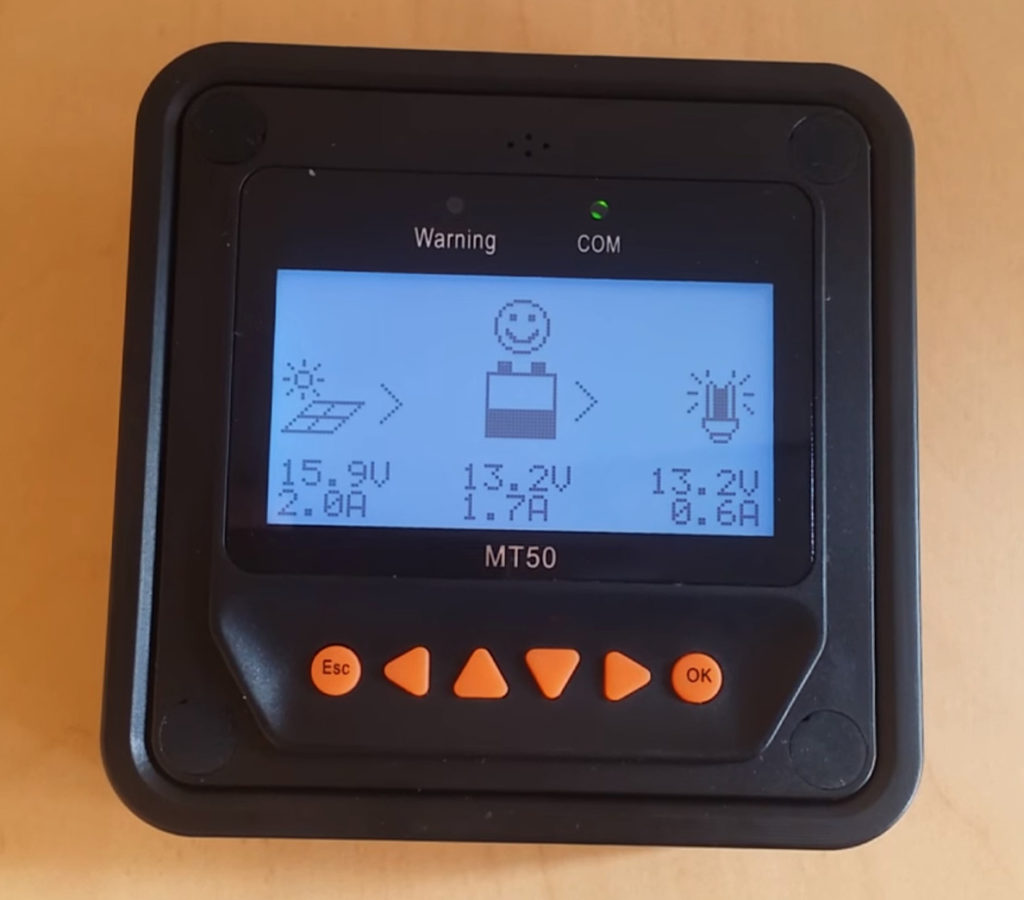
A WI-FI converter can be connected to the controller using the same RJ-45 connector, which will allow you to control the operation of the solar system using a mobile phone.
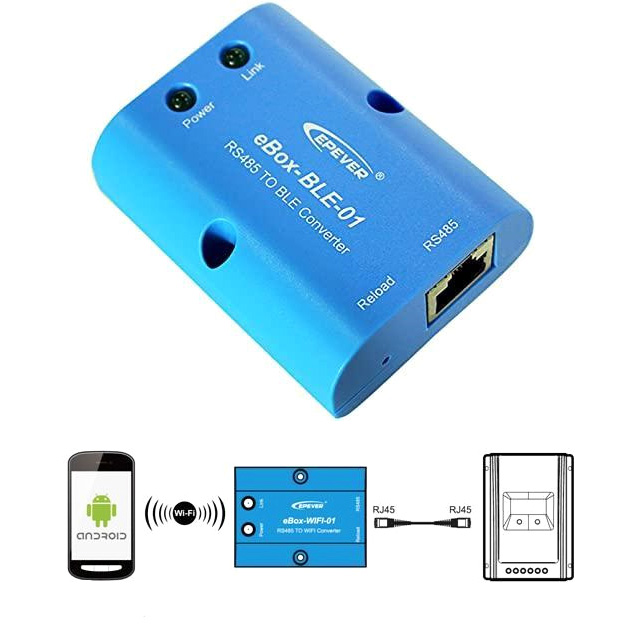
Battery selection
Now consider the batteries – the energy pantry of the solar system. You can, of course, not go into details, but simply connect the battery from KRAZ. Or from a tank. But, alas, such a battery will “die” very quickly. Why? The fact is that each type of battery is designed for its own operating modes. A car battery is almost never dead. This is a lead-acid type, it is undesirable to discharge it even by half of the nominal value. He likes to start powerfully with high current, and then gradually recharge during the ride. If you put it as an energy storage device to a solar battery, it will charge during the day, discharge in the evening and then a problem will come. There is no recharging at night.
The battery is completely discharged for a long time, which is a violation of its operating modes. It won’t last long under these conditions.
The following battery types are recommended for solar panels:
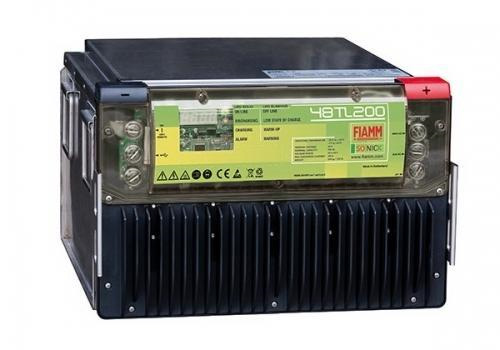
Nickel salt. Withstand deep discharges and up to three thousand cycles. Very durable. Service life up to hundreds of years.
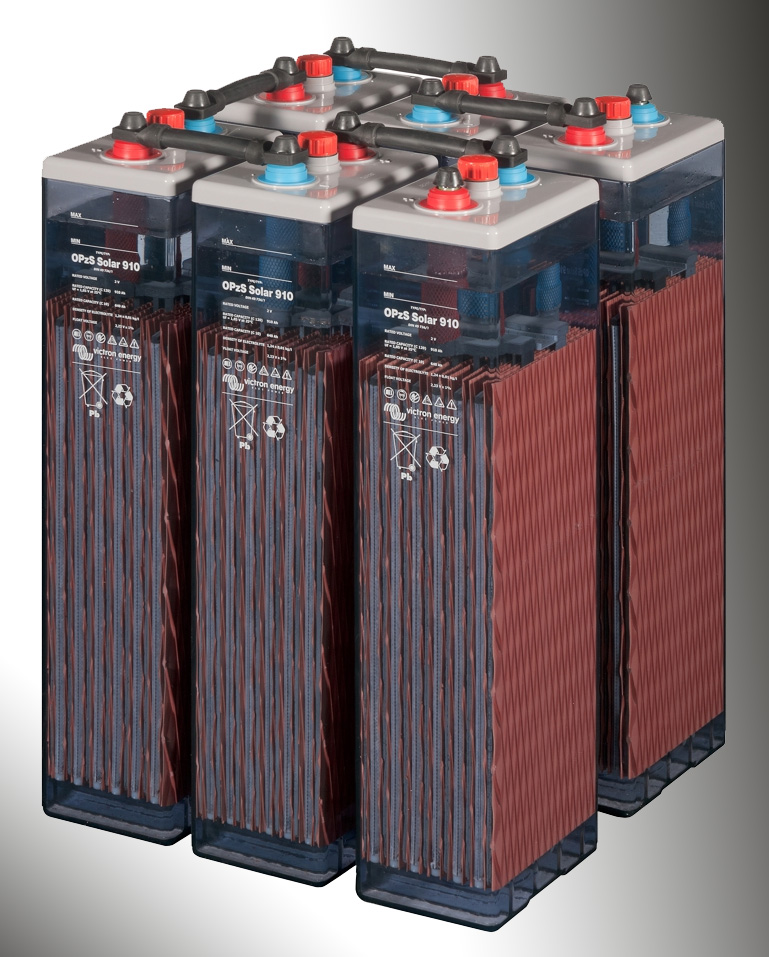
Traction armored. They also withstand deep discharge. Cycle about a thousand times.
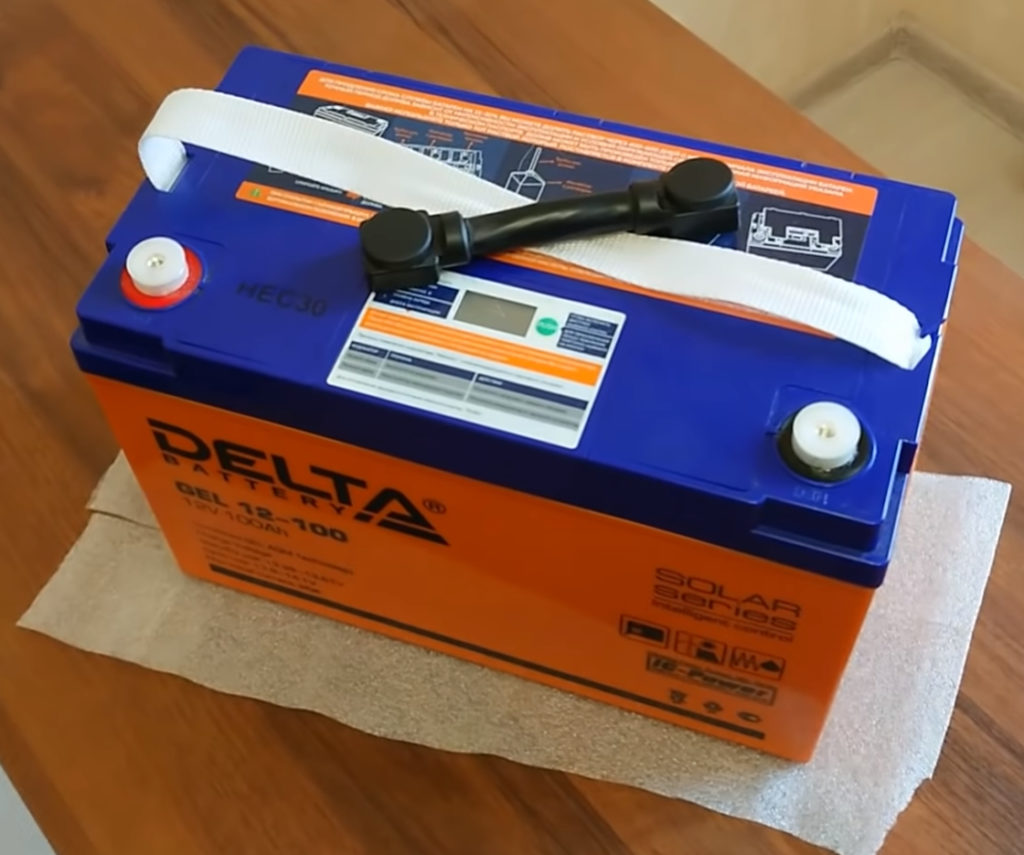
Gel. Deep discharge resistant. Cyclic up to 600.
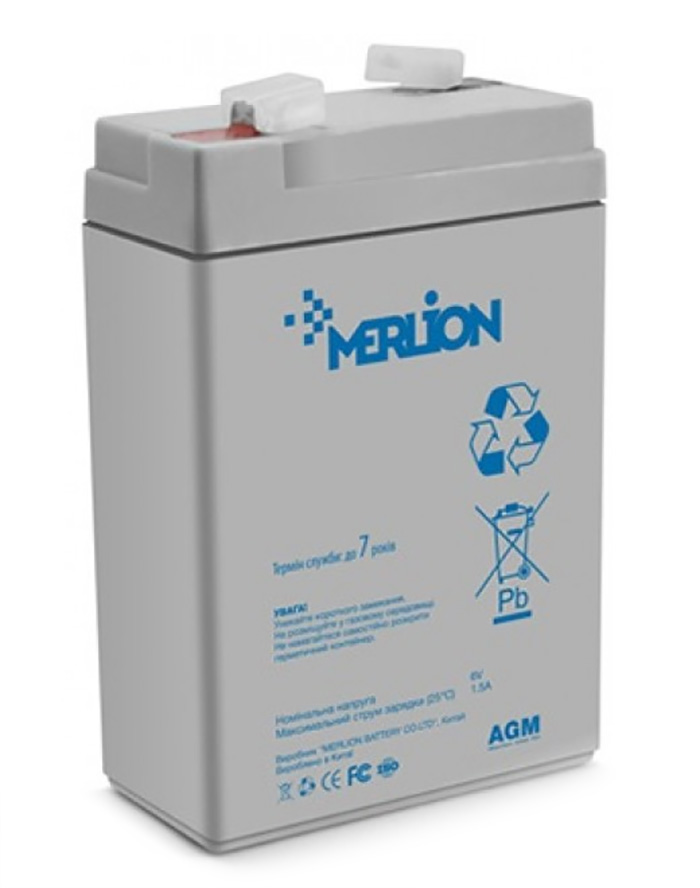
Lead Acid AGMs. The number of cycles up to four hundred. Here the question arises – after all, it was said above that lead acid is not suitable for solar systems. The fact is that these are not ordinary lead-acid batteries, where the acid is simply poured by unscrewing the plug. According to AGM technology, the acid is in an absorbed form, which ensures the microporous structure of the separators and filling with glass fiber. Thanks to this design, the battery is resistant to deep discharges.
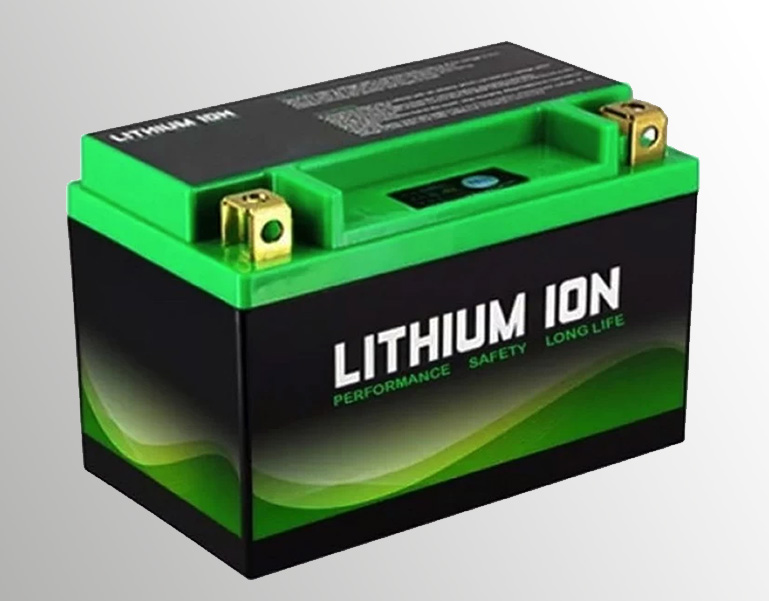
Well, lithium-ion batteries are now widely used. They are also resistant to deep discharges. Number of cycles 3000-6000, depending on the manufacturer. Some manufacturers claim cycling up to 20 thousand times. Service life – 10-20 years.
Cable selection and connection
Cables for solar panels should also be used not the first ones that come across. The fact is that they are exposed to round-the-clock atmospheric action, therefore they must be resistant to heat and frost, rain and snow, to acids, alkalis and oils that are contained in the atmosphere of large cities. In addition, they must match the power of solar panels. Usually, cables with a cross section of 4-6 square millimeters are used, but if the solar system is powerful, then the output cables should be calculated so that they can withstand the total current and voltage of the entire system. The insulation on the cable must be double, and the wire must be stranded. If several solar panels are used, then the common cables must be able to carry the total current of the entire system. The copper wire must be stranded and tinned.
Cables are connected using special connectors. For solar systems, the MS-4 connector standard has been developed. It is designed for cables with a diameter of 4-6 mm, and is available, like many electrical connectors, in two versions – “father” and “mother”.
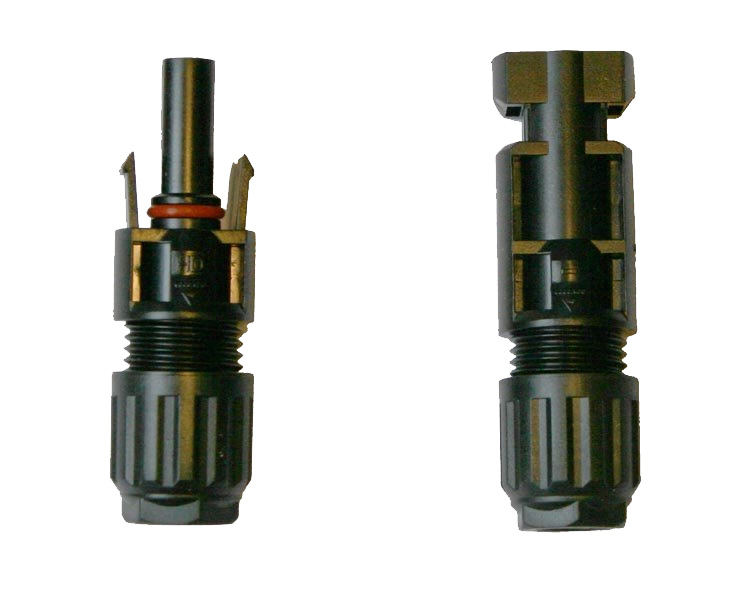
MC-4 standard connectors have a sealed housing with an internal silicone gland and tinned copper contacts. They are designed for a voltage of 1 kilovolt, a current of about 25 amperes and withstand atmospheric influences. For parallel connection, ready-made special connectors have been developed.
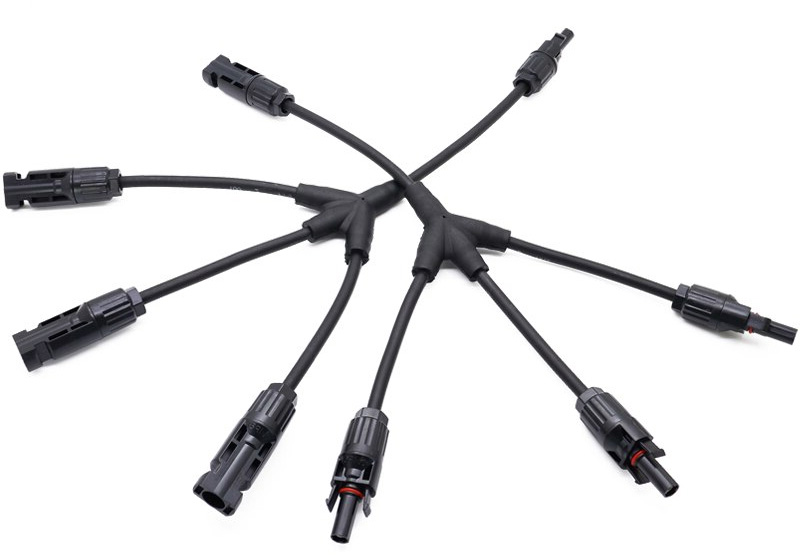
Fuse selection
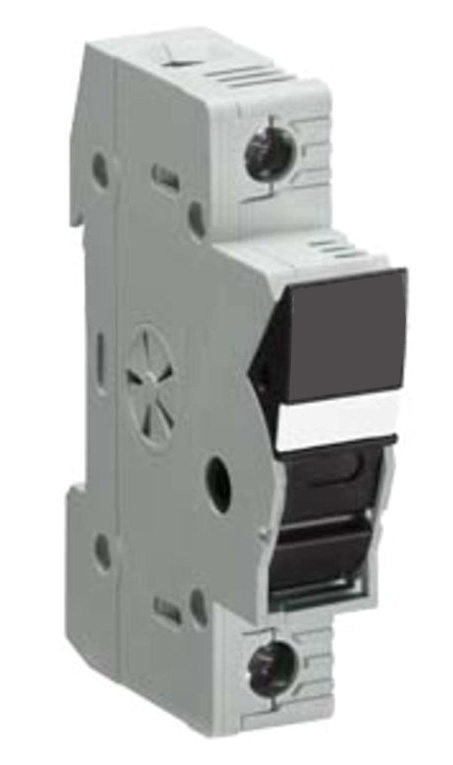
In addition to the above elements, fuses are necessarily used in solar systems, as in many electrical appliances.
Protection is provided for both direct current (DC) and alternating current (AC).
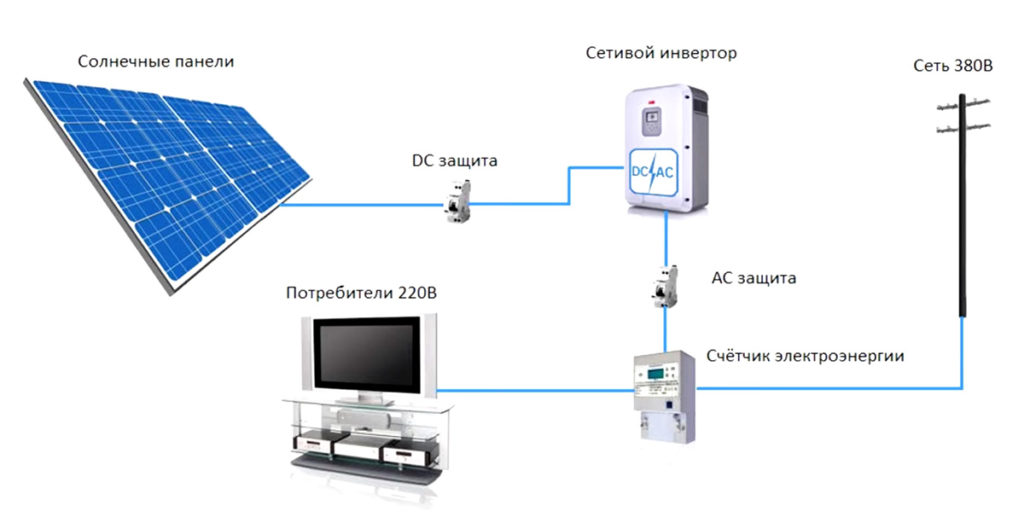
It does not make much sense to consider detailed electrical connection diagrams, since for each solar system it will be necessary to select an individual set of elements and optimize the electrical circuit. And since it is recommended to purchase all the elements from one manufacturer for their best compatibility, this is generally unnecessary, since the specialists at the company will select a set of equipment and switching elements in accordance with your conditions and capabilities, and will also give a detailed connection diagram and recommendations.
